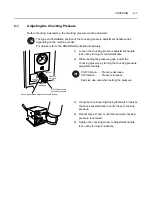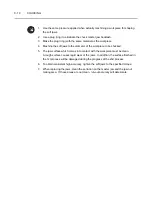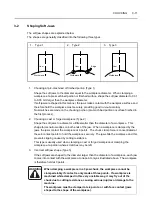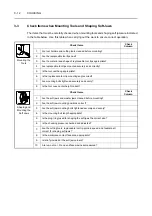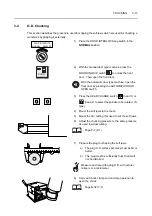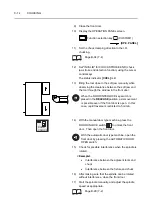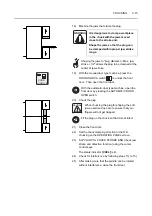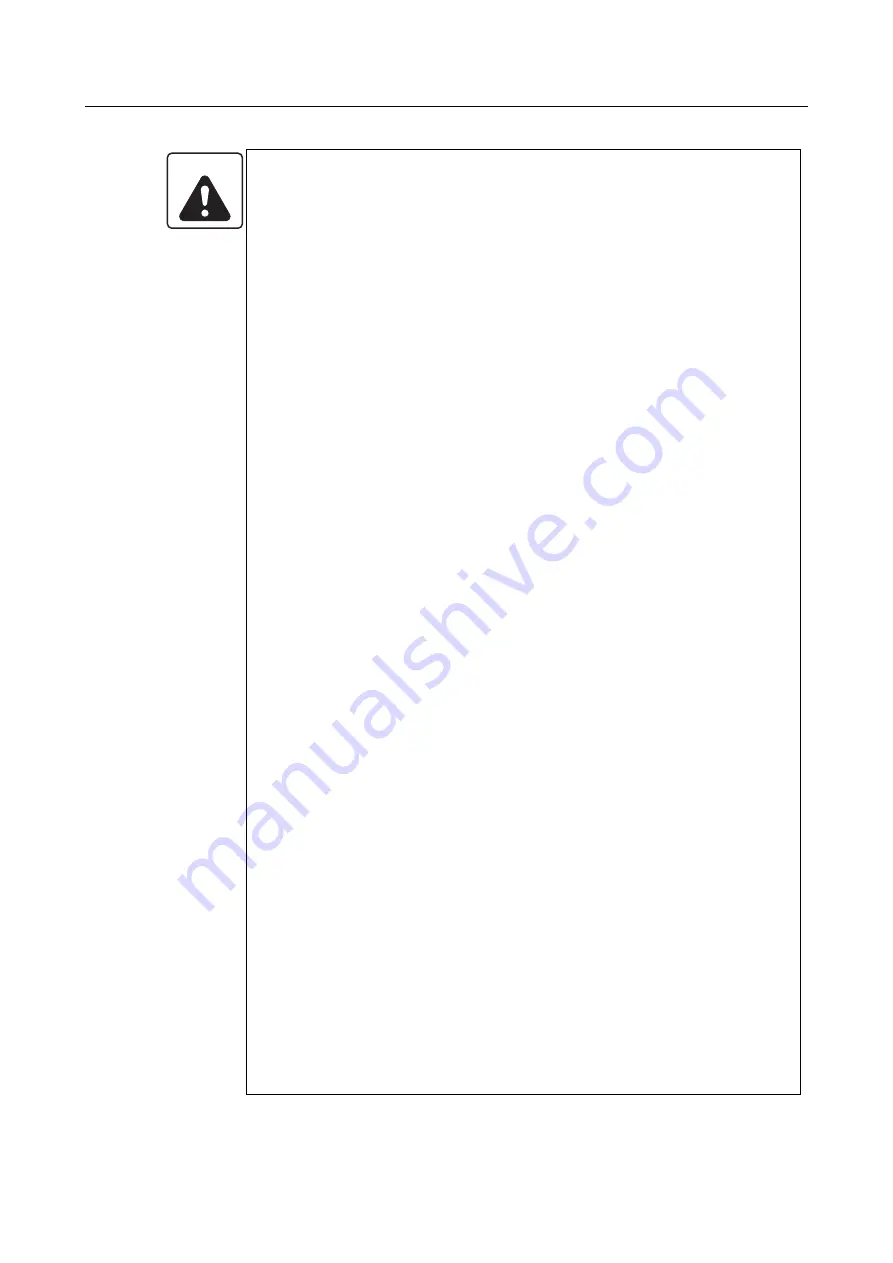
C-2 CHUCKING
WARNING
5.
The socket hole in the hexagon socket head cap bolts used for
mounting chuck jaws and fixtures will become enlarged over a long
period of use. Check these hexagon socket head cap bolts at
regular intervals and if a hexagon wrench does not fit in the socket
hole, replace the bolt with new one.
If there is an excessive gap between the socket hole and hexagon
wrench, the bolt cannot be torqued correctly. If the machine is
operated while a bolt is not torqued correctly, a workpiece, chuck
jaw or a fixture could fly out, causing accidents involving serious
injuries or damage to the machine.
6.
The chuck or fixture that holds the workpiece must be secured to the
spindle using the threaded holes in the spindle nose. Do not mount
another chuck or fixture in a chuck or fixture that is mounted directly
on the spindle. If a workpiece is held by a second chuck or fixture
mounted in this way, it will not be held securely when the spindle
rotates due to the centrifugal force acting on it, and the chuck or
fixture will fly out. This could cause accidents involving serious
injuries or damage to the machine.
If it is necessary to mount a chuck or fixture to hold a workpiece in
the chuck or a fixture which is directly mounted to the spindle,
contact Mori Seiki or the chuck manufacturer for the measures that
should be taken.
7.
A limit is imposed on chuck plunger thrust. If the plunger thrust
exceeds the allowable value, the chuck could be damaged and the
workpiece and chuck jaws could fly out of the chuck, causing
serious injuries or damage to the machine.
For the allowable plunger thrust, refer to the instruction manuals
prepared by the chuck and cylinder manufacturers.
8.
Workpiece materials and shapes vary widely among machine users.
Mori Seiki cannot predict the chucking pressure, spindle speed,
feedrate, depth of cut, etc., that will be required in each case and it is
therefore the user's responsibility to determine the appropriate
settings.
Note also that the machining conditions determined in automatic
programming are the standard conditions, which may have to be
changed in accordance with the workpiece, chuck, etc., and the final
responsibility for determining the conditions rests with the user.
If you have difficulty determining these conditions, consult the
chuck and cylinder manufacturers and tool manufacturer.
Machining under inappropriate machining conditions can cause the
workpiece to fly out of the chuck during machining, causing serious
injuries or damage to the machine. It will also adversely affect
machining accuracy.




















